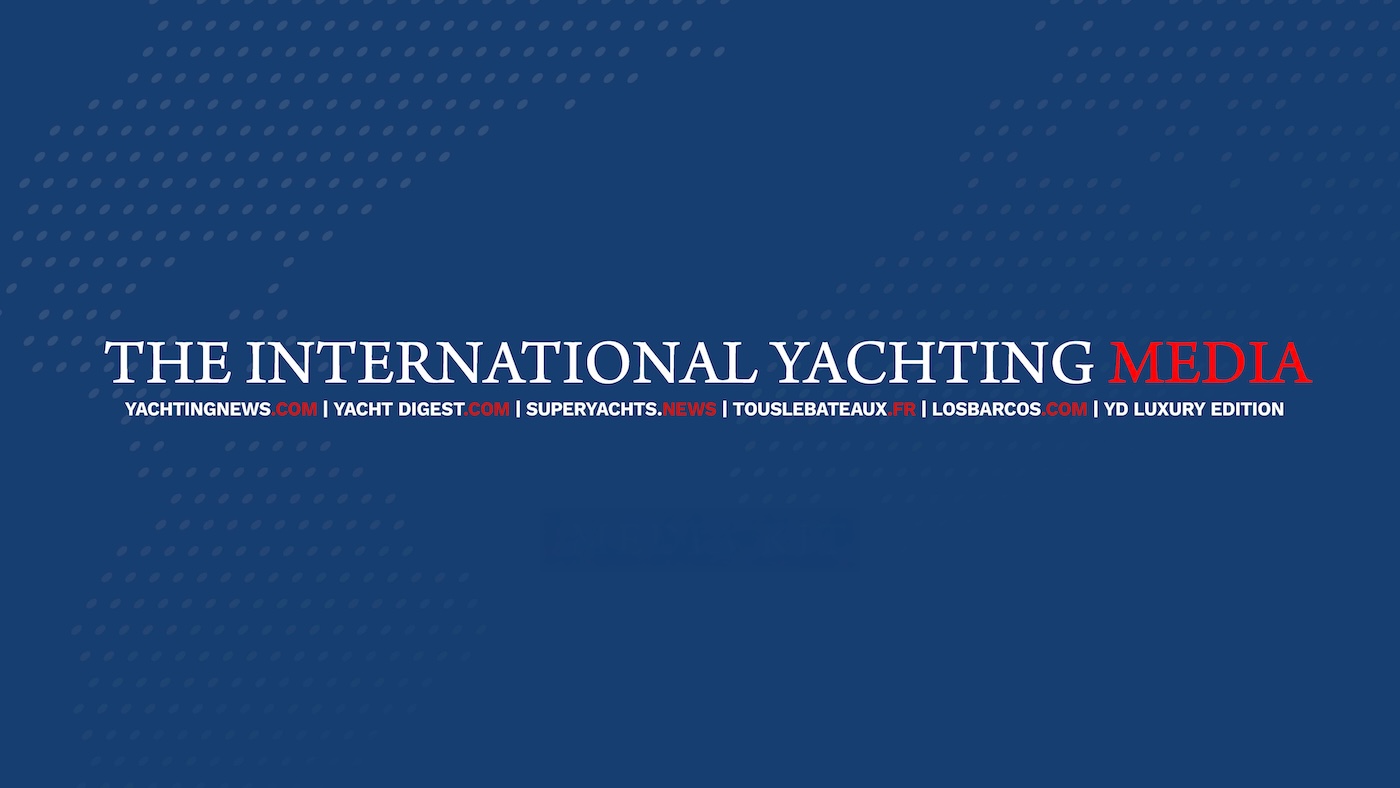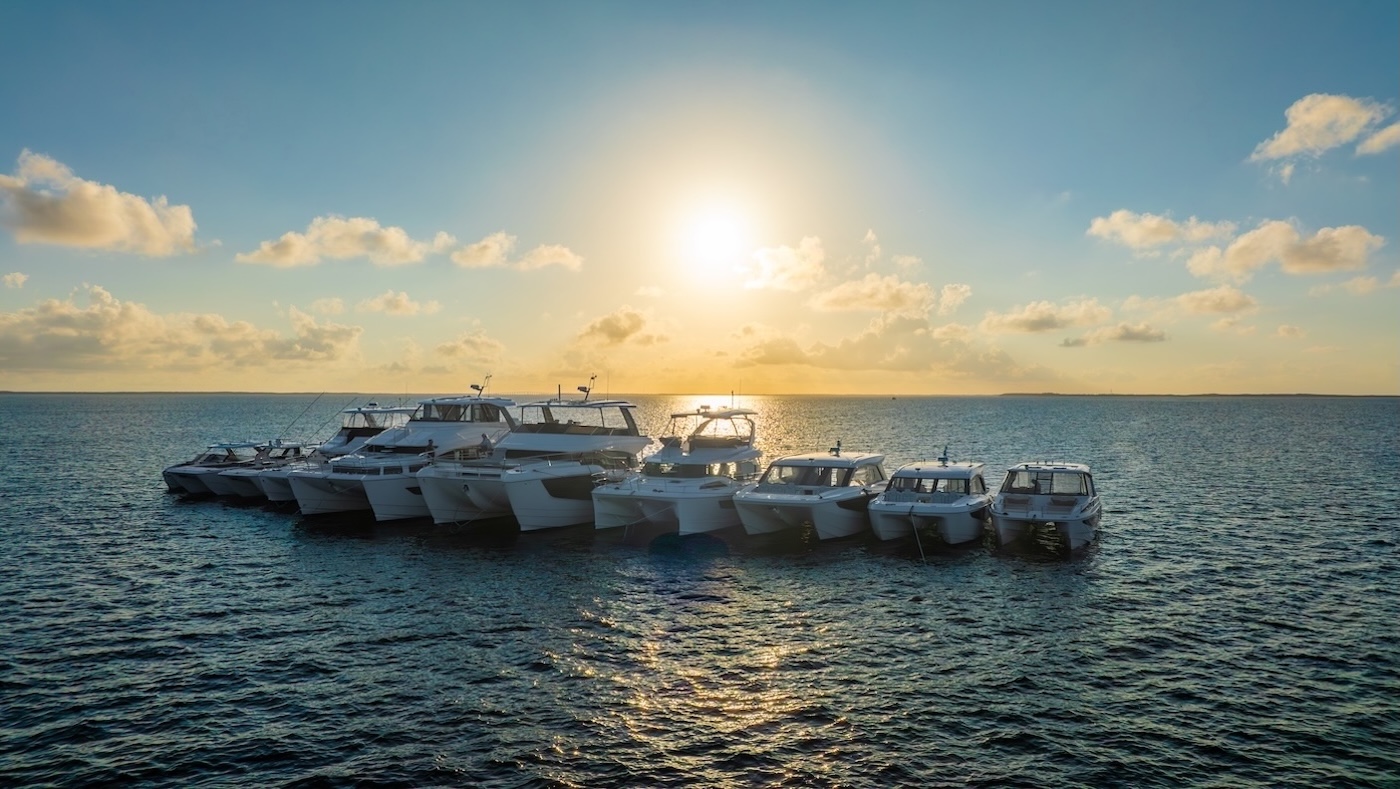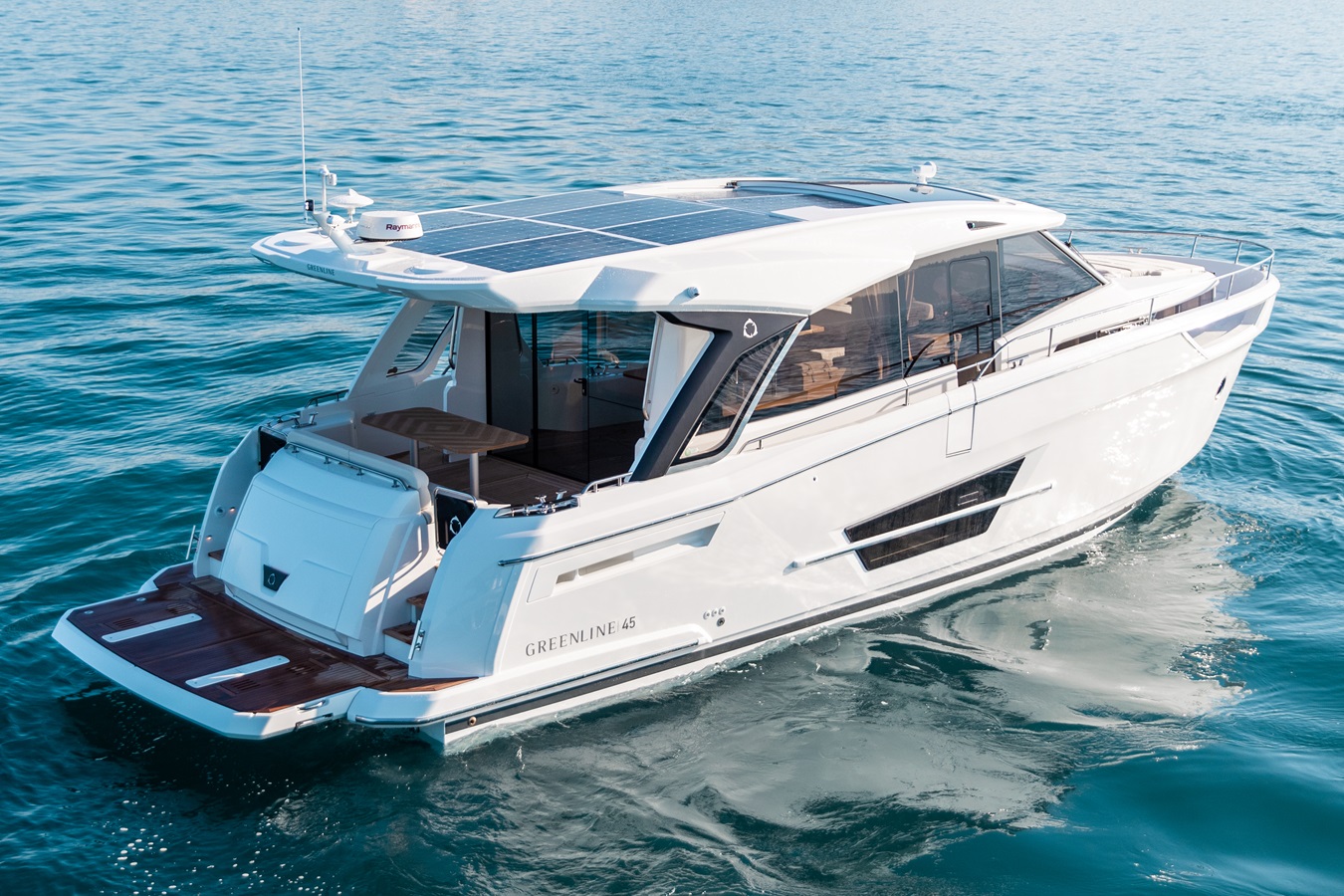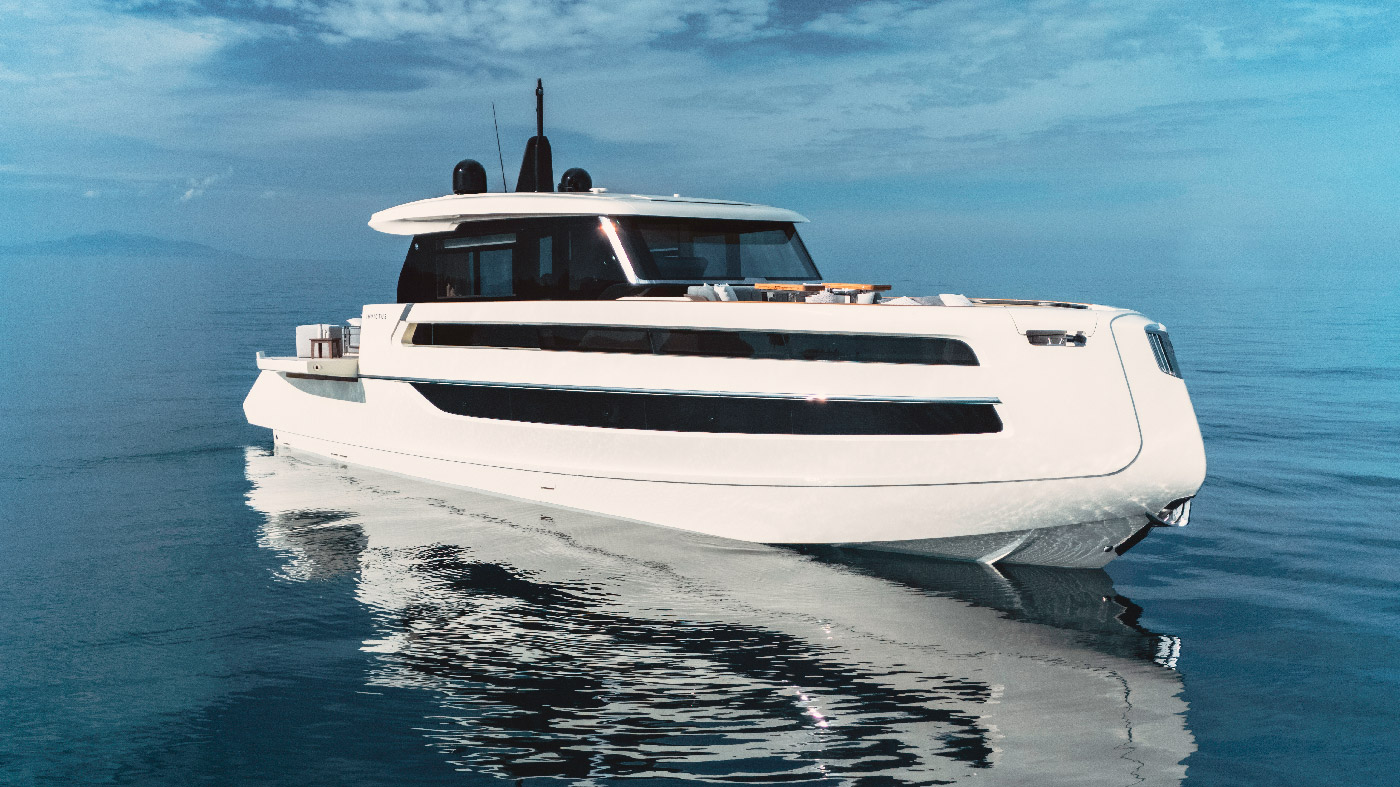The new AC 50 Groupama Team France catamaran was launched and christened in Bermuda by Elise Bakhoum, Rigging Manager of the French sailing team. As the only woman on Groupama Team France’s shore team, she poured the champagne over the bow, as the French do, rather than breaking the bottle. The new catamaran is the means chosen to compete the next 35th America’s Cup by three “pillars” of the white-red-blue sailing: Franck Cammas, Michel Desjoyeaux and Oliver de Kersauson.

After this launch, all the six catamarans of the AC class are now on water. Five of them, including Groupama Team France, Oracle (USA), Softbank Team Japan (Jpn), Artemis (Swe) and Land Rover Bar (Gbr), were all launched in Bermuda. The sixth one, Emirates Team New Zealand, currently the most favourite for the 2017 edition, was launched and still is in Auckland. Maybe, the team doesn’t want to make its pedal-powered boat approach to other competitors.
The launch offered the chance of taking a look at the hydrodynamic appendages of the boat, the L-shaped foils and the T-foil rudders which are the only two elements teams are allowed to adjust in order to improve boat performances. Except for foils, boats are all monotypes further the new rules of the America’s Cup which, trying to reduce costs, in fact change the tradition of the race.

This limitation make teams focus on the only one adjustable section of the boat. With a further limit, however, indicated by the class rules: former Ac 45 catamarans, used as study and training platform, could have six shafts and twelve tips.
On the contrary, new Ac 50 catamarans can have just four shafts and eight tips which mustn’t represent more than 30% of the total foil weight. Length, however, has no limits.

The difference between the two foils of Groupama Team France is evident. The starboard one is a right L while, on the other one, both shaft and tip are more curved. The current rule doesn’t require the Ac 50 catamarans to be configured symmetrically. As a result, port and starboard foils can be different and asymmetric. ” There’s more emphasis on starboard tack than port tack. There are two high-speed reaching legs on starboard tack”, claimed Martin Fisher, one of the designers in The Royal Gazette. We only have to wait for the next races to see whether the French have really found the egg of Columbus.
























